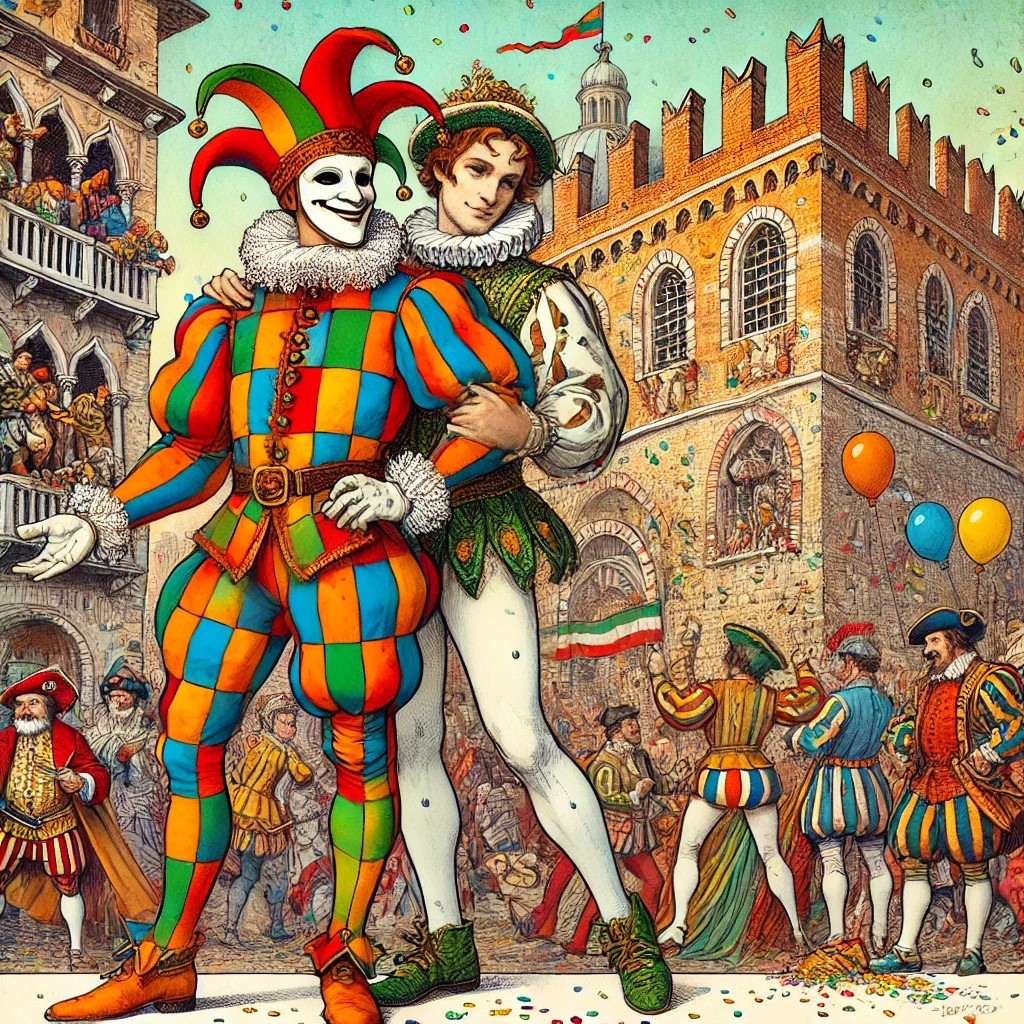A Brief History of Carnival in Bergamo
From Saturnalia to Arlecchino

From the Roman Saturnali to the lively Festa di Mezza Quaresima, the Bergamo Carnival is an interweaving of history, folklore and culture. Between the legendary masks of Harlequin and Brighella, and the glittering floats of the Duchy in Piazza Pontida, this celebration tells the story of the city's beating heart. A legacy from Venetian splendour to the present day - Image generated with AI
Bergamo's history is rich in folklore and tradition, characteristics that have made it a place of primary cultural importance in Italy.
Carnival, just as in other city centres such as Venice and Milan, has helped shape the city's cultural heritage; its origins date back to the ancient Roman world.
The Roman festival of the Saturnalia is considered the most direct ancestor of the modern carnival and has its origins in the pagan cult in honour of Saturn, a festivity during which the god was celebrated with banquets, games and wild revelry. The peculiarity of these festivals, which would later give rise to Carnival, was the reversal of roles between masters and slaves: for once a year, social roles were mixed or even reversed in a merry-go-round of celebrations, dances and colourful costumes. With the advent of Christianity, these festivals were integrated into the Christian religious calendar, giving rise to Carnival, the period of celebrations preceding Lent.
In the Bergamo context, Carnival developed as a phenomenon with unique and extremely local characteristics. One example is the great parade of floats of the ‘Festa di Mezza Quaresima’, organised by the goliardic cultural association ‘Ducato di Piazza Pontida’. Among the typical masks from Bergamo, Harlequin stands out. Harlequin embodies the cunning servant, always involved in some intrigue or prank. Another important character with a white and green costume is Brighella, another example of a cunning prankster in Italian comedy.
Over the centuries, the Bergamasque Carnival underwent changes and transformations that reflected the situation of the city's society. Starting under Venetian rule, for example, the carnival became a colourful and lavish event, influenced by the traditions of the Serenissima. From then on, parades, colours and the throwing of confetti became the norm.
The Carnival of Bergamo is not just a festival, but the beating heart of the identity of a city that, proud of its traditions, is proud to preserve them and pass them on from generation to generation.
Biagio Russo e Nicolina Galassi. Maschere italiane: Origini, storia, bellezza. Drakon edizioni, 2019.
Patrizio Rossi. “Il Carnevale Di Venezia e i Viaggiatori Del Settecento.” Annali d’Italianistica 14 (1996): 425–36. jstor.com, consultato in febbraio 2025.
Giulia Greco. Breve storia di Bergamo. Milano, Newton Compton, 2022.
Toniatti Francesco
Master of Arts in International Relations - University of Leiden
Master of Arts in History and Oriental Studies - University of Bologna
Former History Teacher - International European School of Warsaw
2025-03-04
Francesco Toniatti
